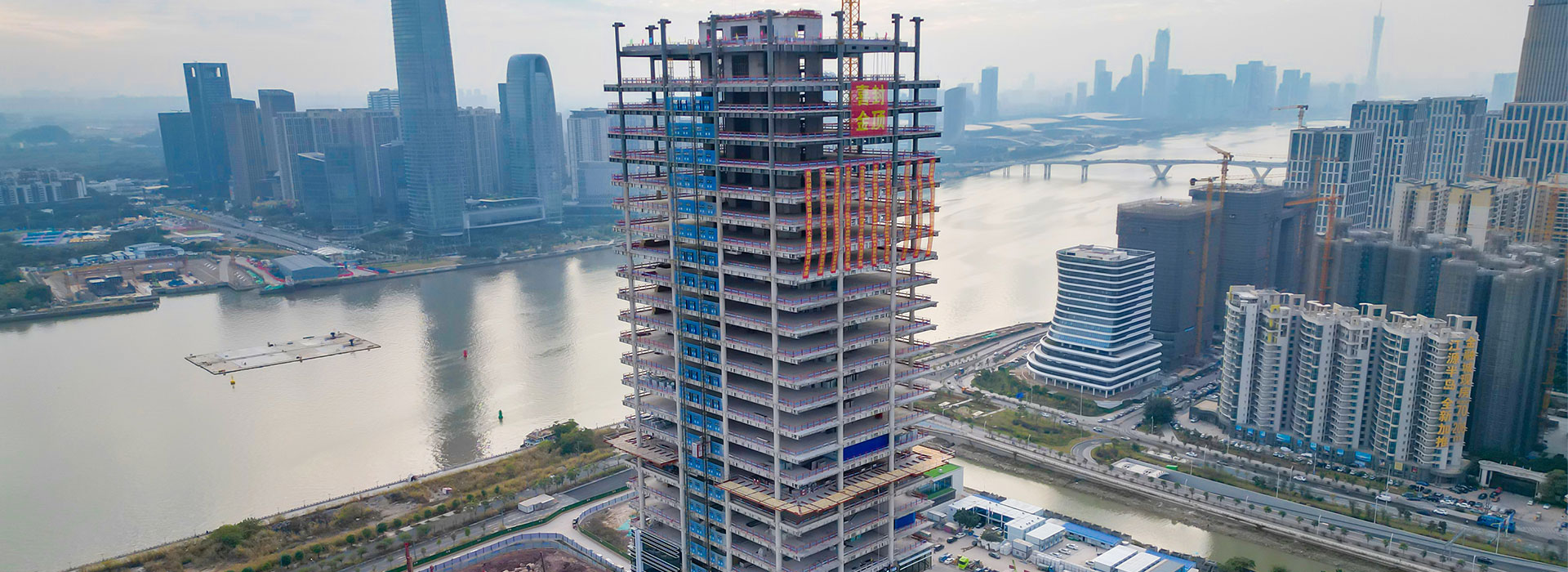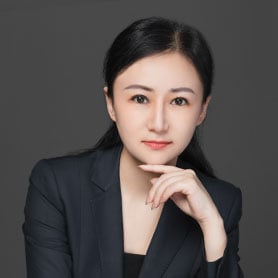Ting He: Innovation through benchmarking and cross-industry collaboration
Self-proclaimed as a “non-mainstream” female leader in the construction industry, Ms. He Ting, Deputy General Manager, China Construction Science and Industry Corporation, has developed a profound understanding of sustainability over her 20+ years career and become a committed practitioner of sustainability in the industry.
Interview date: February 28, 2024


Ting He
Deputy General Manager, China Construction Science and Industry Corporation
Q.
Regarding the topic of “sustainability”, are there any moments in your career that you may call milestones?
I worked as a translator in overseas projects when I first joined CSCEC-4 after graduation. That’s where I first encountered NGOs whose works were focused on environmental and ecological issues, which were all sustainability issues. My awareness of sustainability began to grow.
When we worked on the Guangzhou Taikoo Hui project in 2007, I was deeply impressed and influenced by the “THRIVE” sustainability strategy of the SWIRE group. That strategy covered six aspects and was pioneering at that time. Starting from 2020, CSCEC-4 designated the new energy business as one of the eight product lines for transformation. In July 2023, the company established the Emerging Business Development Headquarters, where I served as the commander in charge of the innovation and the exploration of emerging business. It was also around that time that we began to prioritize sustainability in our work. To summarize, my understanding of sustainability has evolved from an abstract, conceptual cognition to more specific and comprehensive practices.
“My understanding of sustainability has evolved from an abstract, conceptual cognition to more specific and comprehensive practices.”
– Ting He, Deputy General Manager, China Construction Science and Industry Corporation
Q.
Leaders increasingly turn to technologies and innovations for inspiration and competitive advantages when they seek more sustainable solutions. In your opinion, what role does innovation play in achieving sustainable business practices?
When it comes to innovation, I once held a common belief that it was all about high technology, and only done by a handful of experts, or associated with research institutions and universities. When CSCEC-4 established the Emerging Business Development Headquarters and appointed me as the commander, my initial reaction was “why not choose a technology director”? The company’s chairman told me that innovation is not only about technology, also refer to improve things that haven’t been done well, it’s also about improving traditional business through new models, new combinations, new mechanisms, and new ways of thinking.
I realized that innovation and technological progress are two different things. Other types of innovation, whether it is conceptual innovation, service innovation, cultural innovation, systemic innovation, and management innovation are all forms of innovation.
For example, we can address a company’s pain points through management innovation and new mechanisms. We combined several internal companies to form a simulated limited partnership to stimulate collaboration, which successfully increased market competitiveness, and solved the problem of the ecological chain.
Q.
Companies tend to be relatively cautious or aggressive when they explore new technologies and innovations?
Let me take CSCEC-4 as example. We developed a three-year plan for Emerging Business. In the plan, frontline questions related with what principles should we follow, how to evaluate business, and which fields choose to enter. Avoiding being too aggressive or too cautious, we established the “Four Questions and Four Considerations” framework. This approach involves evaluating potential fields based on alignment with our overall direction, growth potential, profitability, and funding feasibility. This approach helps us to choose basically correct direction.
We also have Seven Major Principles: focusing on core business, talent-driven, market-oriented, open innovation, collaborative competition, saturation attack, and risk control. These principles were carefully considered and finalized through extensive discussions among the team.
Q.
In your industry, does innovation mean completely abandoning existing solutions and starting from scratch (from 0 to 1), or is it more about optimizing existing solutions?
We have always been thinking whether innovation is about going from 0 to 1. However, we now believe that innovation can be both from 0 to 1 and from 1 to 2. Construction is a relatively traditional industry in China, where a more suitable innovation mindset may be from 1 to many. In the innovation theory, this is called fractal innovation, which means the second curve doesn’t come out of nowhere, rather, it grows from the first curve. This innovation mindset is more suitable for the current construction industry.
For the entire industry to develop and iterate rapidly, all companies need to adopt a mindset of shared success and cooperation. We encourage open innovation, both outbound and inbound, and generate more new ideas through benchmarking, peer assistance, and cross-industry collaboration. Meanwhile, we can share market-oriented experiences with peers, contributing to the overall progress and development of the industry.
“We encourage open innovation, both outbound and inbound, and generate more new ideas through benchmarking, peer assistance, and cross-industry collaboration.”
– Ting He, Deputy General Manager, China Construction Science and Industry Corporation
Q.
Actions are often driven by highly disruptive events such as energy crises and supply chain disruptions. What impacts do such changes have on future innovations for enterprises?
I believe that crisis and opportunity coexist, especially for those doing emerging business. They need to be good at spotting opportunities amidst crises.
These new industry forms require us to continuously enhance team’s adaptability, learning ability, and collaborative ability. They also require business models to continuously evolve, for example, in construction industry, we take from the traditional construction, gradually transition to the integration of investment, construction and operation; or starting from engineering construction, expand to technology, product R&D.
“I believe that crisis and opportunity coexist, especially for those doing emerging business. They need to be good at spotting opportunities amidst crises.”
– Ting He, Deputy General Manager, China Construction Science and Industry Corporation
Q.
How do other functions within the company (such as operation, safety, and risk management) affect business innovations to help the company survive fluctuations and achieve long-term success?
When we promote ESG initiatives, all functions are highly supportive because sustainability awareness is already strong across the board. However, there is indeed resistance when we try to advance new businesses, largely due to inertial thinking and path dependency. Many traditional business departments and core functions must consider how to sustain continuous growth on the first curve, as it is their primary responsibility. They naturally prioritize addressing issues on the first curve before considering the second curve. This mindset may conflict with the implementation of emerging business.
We implemented two measures to address this conflict. CSCEC-4 are managed in a matrix structure, but for emerging business, a more agile honeycomb-type structure should be adopted. Emerging businesses do not start from scratch, instead, they are more like supportive business that bolster those on the first curve. Through such innovation, we aim to change approach and continuously explore new growth curves, so as to help the company navigate through economic cycles and achieve sustainable development.
“When we promote ESG initiatives, all functions are highly supportive because sustainability awareness is already strong across the board. However, there is indeed resistance when we try to advance new businesses, largely due to inertial thinking and path dependency.”
– Ting He, Deputy General Manager, China Construction Science and Industry Corporation
Q.
How should the younger generation plan their careers to achieve sustainable development?
CSCEC provides career development plans for talents and gives various opportunities to experience and grow in different positions. It allows me to explore multiple possibilities.
The younger generation should keep learning and thinking while waiting for opportunities. Knowledge updates and iterates very quickly, what you learn today may become outdated in just a few years, so it’s important to keep learning. Moreover, you shouldn’t only focus on knowledge related to current job, but also other fields in advance. This way, help you quickly be adapted to new positions. There is no waste of time on the path of learning. Every bit you acquire today will benefit you in the future.